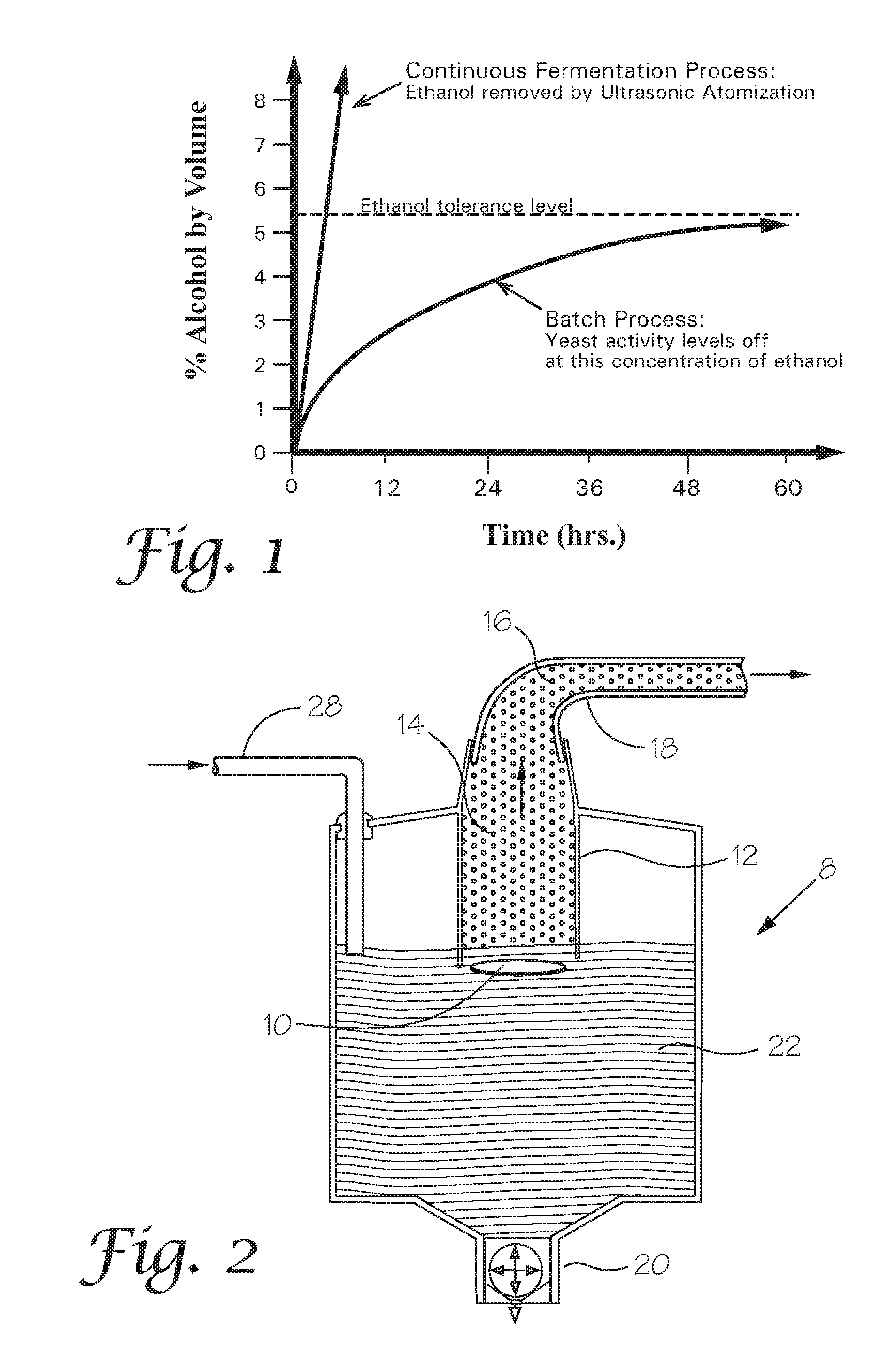Method and device for improved fermentation process
a technology of fermentation process and method, which is applied in the direction of separation process, evaporation, biofuels, etc., can solve the problems of slowing down the fermentation process, and requiring batch processing, so as to prevent the excess of ethanol tolerance and without significant affecting the activity of yeas
- Summary
- Abstract
- Description
- Claims
- Application Information
AI Technical Summary
Benefits of technology
Problems solved by technology
Method used
Image
Examples
Embodiment Construction
[0026]FIG. 1 shows a schematic graph of an exemplary and comparative reaction displaying progress in relation to time for a typical sugar-yeast fermentation process. As the ethanol concentration builds up, the rate starts slowing down; finally, the reaction practically terminates. The fermentation microorganisms above this stage are no longer active. The specific concentration of ethanol that slows and terminates the reaction process depends on the fermentation mixture and the nature of the fermentation organism used. The terminating ethanol concentration could be as low as 5-6% (v / v) for cellulosic materials using modern enzymes in the conversion to reactant material and fermentation process. Roughly, 12-20% is the limit for a sugar and yeast system, but higher levels are also reported. Certain strains of yeast used for fermentation of cellulosic material have a very low tolerance limit of about 5%. Irrespective of the specific concentration level, the very presence of such an inhi...
PUM
| Property | Measurement | Unit |
|---|---|---|
| boiling point | aaaaa | aaaaa |
| electrostatic voltage | aaaaa | aaaaa |
| pressure | aaaaa | aaaaa |
Abstract
Description
Claims
Application Information
 Login to View More
Login to View More - R&D
- Intellectual Property
- Life Sciences
- Materials
- Tech Scout
- Unparalleled Data Quality
- Higher Quality Content
- 60% Fewer Hallucinations
Browse by: Latest US Patents, China's latest patents, Technical Efficacy Thesaurus, Application Domain, Technology Topic, Popular Technical Reports.
© 2025 PatSnap. All rights reserved.Legal|Privacy policy|Modern Slavery Act Transparency Statement|Sitemap|About US| Contact US: help@patsnap.com



